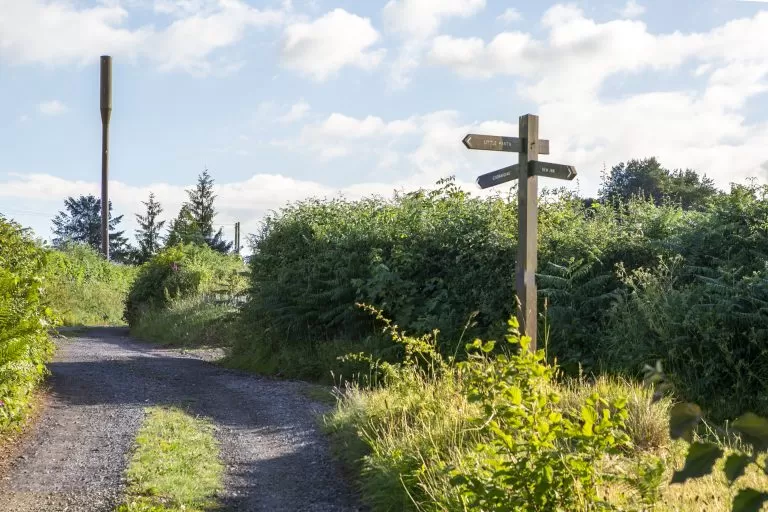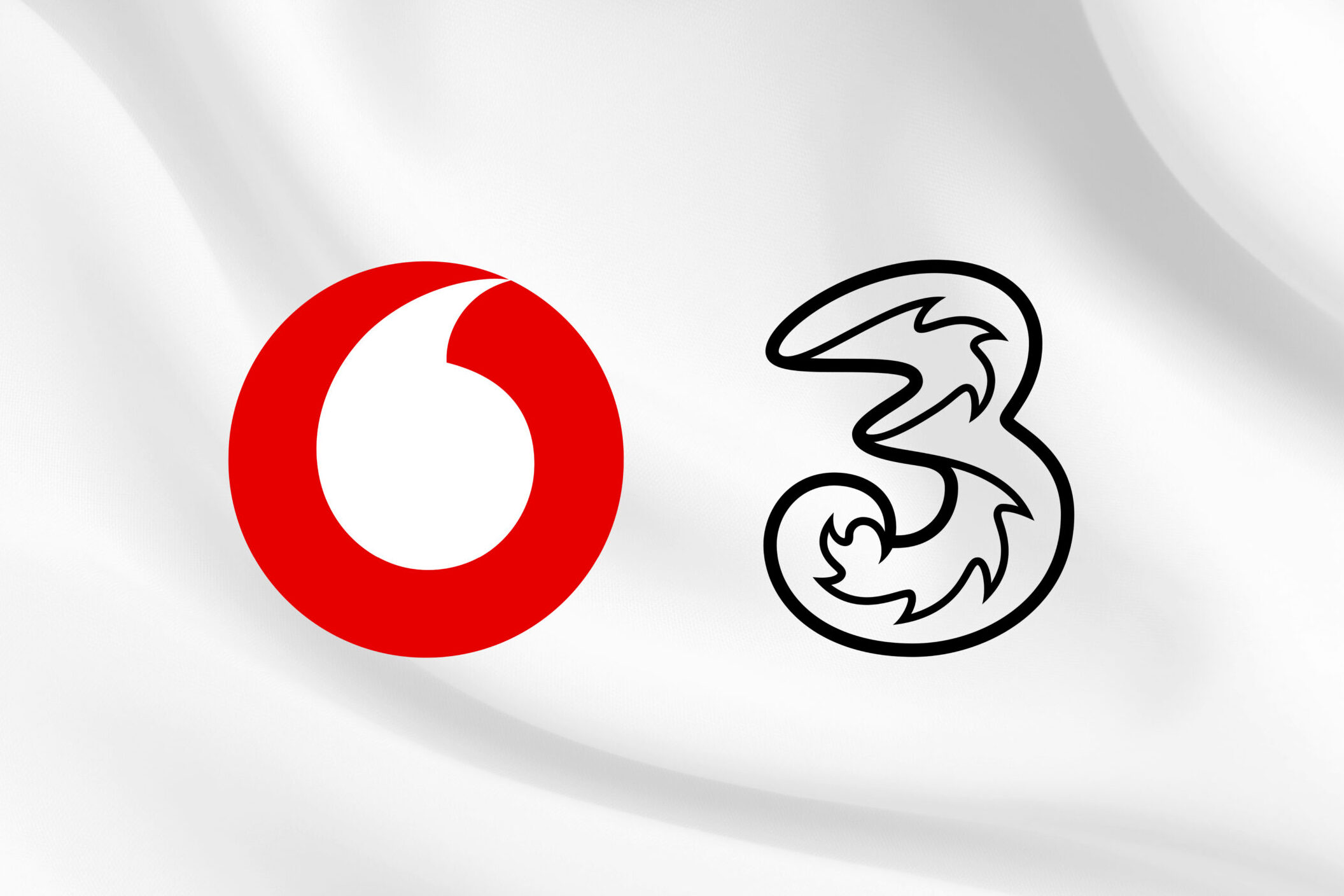Vodafone UK is not only committed to exceeding the Shared Rural Network 4G coverage target for Scotland. A merged Vodafone-Three UK would go even further with a 5G SA rollout across the nation.
- Scotland stands to gain £9 billion in productivity benefits from 5G Standalone (5G SA) – the latest generation mobile network – which could transform rural Scottish communities by improving sectors such as healthcare, education, agriculture and business.
- Vodafone also commits to exceeding the UK Government’s Shared Rural Network minimum target of bringing 4G to 74% of Scotland’s geography* by bringing it to over 89% of Scotland’s geography by 2027. The merged business (of Vodafone UK and Three UK) would then go further by upgrading this network to 5G Standalone by 2034.
Vodafone has reaffirmed its commitment to providing 5G Standalone (5G SA) technology to nearly 90% of Scotland by 2034 as a result of its proposed merger with Three UK.
The commitment was made as part of a reception recently held at the Scottish Parliament in Holyrood. The reception was attended by Members of the Scottish Parliament, as well representatives from relevant trade associations, think tanks and media. Attendees heard that Scotland stands to gain £9 billion in productivity benefits by 2030 from the rollout of 5GSA technology – the next generation mobile network which uses cutting-edge infrastructure to provide faster connectivity compared to non-standalone 5G technology.
At the event, attendees also heard from Richard Lochhead MSP, Minister for Small Business, Innovation & Trade, and Rachael Hamilton MSP, Shadow Cabinet Secretary for Rural Affairs and Islands. They talked about the value of a nationwide 5G rollout to Scotland.
Hailstones and hiking boots: Vodafone's commitment to rural 4G
Improving 4G signal as part of the Shared Rural Network isn't easy, as Vodafone UK News followed the muddy footsteps of engineers and network specialists.
This activity follows Vodafone UK research which found that 91% of Scotland’s rural areas are total 5G not-spots, compared to just 20% of Scotland’s urban areas. Vodafone also identified significant regional disparities, with a rural area in Scotland 62% more likely to have no 5G at all, compared to a rural area in England.
There are several potential benefits of a 5G SA rollout across rural Scotland.
- In healthcare, it offers the ability to both pre-empt and react to health emergencies, saving the overall UK Health and Social care sector almost £1 billion. Vodafone’s commitment to bring 5G SA to every hospital by 2030 will also ensure they have the latest technology, touching almost every part of healthcare, from remotely-assisted surgery, to drones carrying transplant organs and drugs between hospitals. It could also allow people to enjoy service solutions such as remote GP appointments, removing the need to travel long distances and reducing waiting times.
- In agriculture, farmers will be able to make use of new innovations such as soil sensors, as well as boost productivity, reduce environmental impact and drive growth in rural economies. Previous Vodafone research found that 5G-enabled sensors could help a farm to reduce its chemical usage by 30%, as well as improve efficiency by 15%. The same research also highlighted that tools such as a 5G-connected weather station could help farmers plan irrigation schedules, ultimately leading to an approximately 30% fall in the farm’s water consumption.
- In education, technology could offer advances in virtual classroom applications enabling young people to access specialist teaching.
- In energy, research revealed that 5G SA has the potential to generate enough wind power to heat an extra 2.4 million homes by 2035, enough to heat every home in Scotland.
Transforming wind farms with 5G could help generate enough additional clean energy to heat 2.4 million UK homes, enough to heat every home in Scotland
This would be equivalent to removing 700,000 petrol cars from the UK's roads by 2035.
Rachael Hamilton, Shadow Cabinet Secretary for Rural Affairs and Islands said: “I was delighted to sponsor Vodafone UK’s Digital Society event in the Scottish Parliament. Sadly, there is a digital divide between urban and rural areas in Scotland, with 42% of rural properties in 5G total not spots. I was therefore pleased to hear about Vodafone UK’s plans to roll out a 5G network across Scotland. This would deliver significant benefits and opportunities for people, communities and businesses in rural areas, such as in my constituency in the Borders.”
Richard Lochhead, Scottish Government Minister for Small Business, Innovation, Tourism and Trade said: “Improving Scotland’s digital infrastructure and driving adoption of technologies across the economy and public sector is an ambition which Vodafone and the Scottish Government share. Digital connectivity connects us to friends and family, enables flexibility in the workforce and workplace and keeps us informed and entertained. Through collaborative working with the mobile industry to increase access to 4G and 5G, we can support a fair, green and growing economy and transform our public services.”
5G Ultra: Everything you need to know
5G Ultra is Vodafone's name for 5G Standalone services in the UK - the next iteration of 5G. Here's what it can do for you and how you can get it.
Andrea Dona, Chief Network Officer at Vodafone UK, said: “Connectivity is vital for everyone – whatever their postcode – and this new research reveals the extent to which people in rural Scotland are experiencing digital exclusion. Evidently, we need to accelerate the rollout of 5G infrastructure to all of Scotland. With our proposed merger with Three UK, we would be able to bring 5G SA to over 89% of the Scottish landmass by 2034, ensuring rural Scotland is not left behind.”
Stay up to date with the latest news from Vodafone by following us on Twitter and signing up for News Centre website notifications.
-Ends-
Notes to editors
*from all four mobile operators.
- A 5G connectivity not-spot refers to an area which is either a total or partial not-spot. A total not-spot is an area which receives no 5G coverage. A partial not-spot receives 5G coverage from one or more, but not all major operators.
- Data pertaining to 5G coverage across Scotland and England is taken from Ofcom’s Connected Nations 2023 report.



![crowd-at-the-concert[Adobe_Stock] stock photo of a crowd of people holding up their phones at a concert](https://www.vodafone.co.uk/newscentre/app/uploads/2023/06/crowd-at-the-concertAdobe_Stock.jpg)
